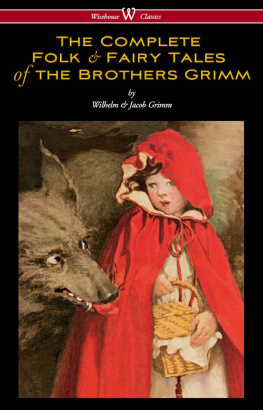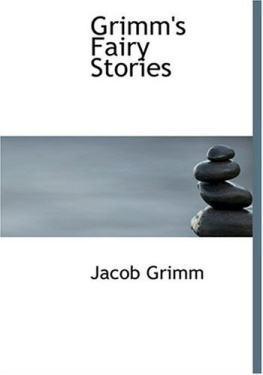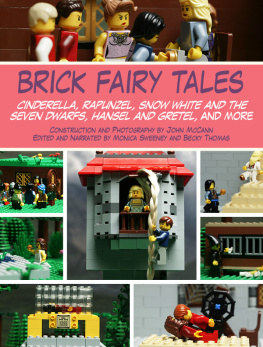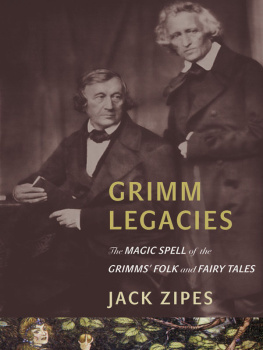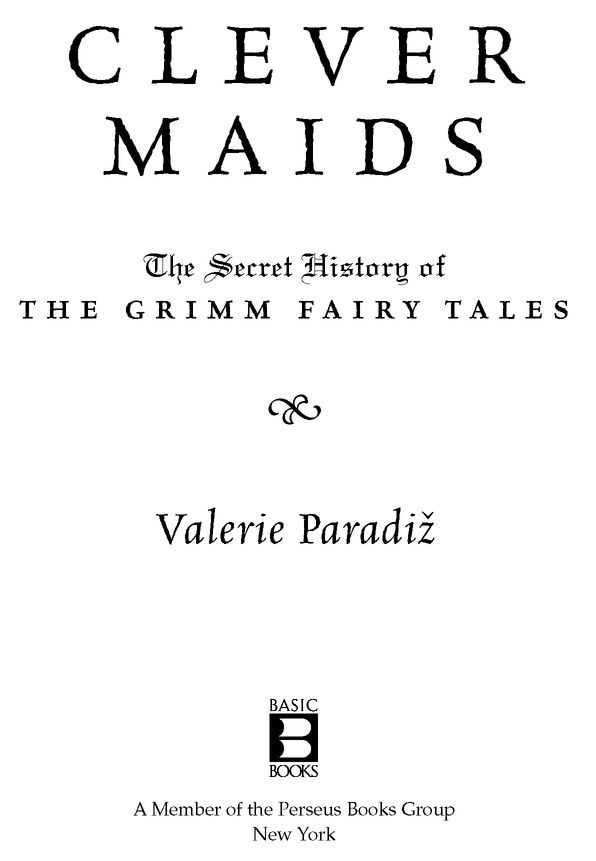Table of Contents
Also by Valerie Paradi Elijahs Cup
For Herbert, Hilde, Gabi, Jrg, and Stephan
PROLOGUE

THE VERY FIRST STORY IN THE FAMOUS ANTHOLOGY OF fairy tales collected by the brothers Grimm is The Frog Prince. Its about a raspy-throated frog with bad manners who seeks the favor of a lovely, but reluctant, princess. Most of us think we know the plot: A handsome prince, who has fallen under an evil spell, is trapped inside the body of a frog. Only the kiss of a princess can restore him to human form. So the frog sets about following the princess around the castle, croaking demands: He wants to eat from her little golden plate, and drink from her little golden cup. The girls father, like so many patriarchs in the Grimms fairy tales, exerts full authority over his daughter and orders her to grant the frogs every wish. The sexual innuendo escalates when the frog hops into the princesss bedroom one night and demands to sleep with her in her pure little bed. If she refuses, hell tell the king. But theres always an element of surprise in the Grimm fairy tales, and it seems the princess will not be bullied. She picks the frog up and hurls the slimy creature across the room. Splat. He hits the wall and falls to the floor, whereupon he turns into a handsome prince. Then they kiss.
Why are the Grimms fairy tales so compelling? The shock factor of their raunchy humor, sexual and physical violence, and outrageous gender inequity is spellbinding for modern readers who are accustomed to far more innocuous childrens literature. The stories rich narrative strainsof good and evil, of wealthy and poor, of heroic and helplesspenetrate our collective psyche with their mythic portrayals of our humanity, and our inhumanity. We feel a voice speaking to us through the centuries, and thats just what the fairy tales are: stories that have been transmitted orally, generation to generation, from as far back as antiquity and the Middle Ages.
Tracing the development of these narratives, through the fog of time and translation, might seem an impossible task. But there is a surprising history underlying the Grimm tales that transcends their dark origins. Unlike Mother Goose, the brothers Grimm are not mythical figures. They were Jacob and Wilhelm, flesh and blood men. Born respectively in 1785 and 1786 and raised in the kingdom of Hesse, they became two of Europes most preeminent philological scholars of the nineteenth century who struggled to make a living from their research in the cities of Marburg, Kassel, Gttingen, and later in Berlin, where they both died. Moreover, certain untruths about the brothers have swirled around the fairy tales for nearly two centuries, not least of which is the assumption that the brothers Grimm wrote the stories themselves. But their famous Childrens and Household Fairy Tales, published in several editions between the years 1812 and 1857, were not original narratives authored by Jacob and Wilhelm. Much like the popular folk song anthologies that circulated during the Romantic Age, the fairy tales were a group effort that required communal scholarship and the dedicated work of multiple contributors. The brothers Grimm selected, compiled, and edited the stories they gathered from many different collaborators.
Even more untrue than the myth of independent authorship is the long-standing myth of the brothers travels through the countryside, village to village, transcribing stories told to them by farmers and peasants. Jacob and Wilhelm are themselves responsible, at least in part, for perpetuating that image. Though they never directly claimed to have worked in this fashion, they unwittingly created a romantic conceit about their process by hiding the identities of their most crucial collaborators, without whom the stories never would have made it into print. These contributors were neither commoners nor peasants, just as they were not those little fairy tale elves that sweep into the house late at night to take care of the days unfinished work. They were, in fact, women, and, whats more, they were educated ladies.
Few readers know that more than half of the 210 fairy tales included in the Grimm anthologies had a womans hand in them, whether they were recorded from her storytelling or recorded by her as she listened to another storyteller. These were the sisters of the Wild, the Hassenpflug, the von Haxthausen, and the von Droste-Hlshoff families. They served as fairy tale think tanks to whom Jacob and Wilhelm Grimm turned for the majority of the stories. The brothers also discovered solo geniuses, such as the amazing Dorothea Viehmann, whose stories, though not widely known today, are arguably some of the most sophisticated in theme and narrative development. The most famous and beloved fairy tales come from these women, stories that, bearing the Grimm name, have made their way into nearly every country and culture in the world: Red Riding Hood, Rumplstiltskin, Cinderella, Snow White, and Briar Rose (or, as its more popularly known, Sleeping Beauty). Other men contributed to the collection as well, of course, but the method of their involvement was different. Rather than transcribe the stories from storytellers or share ones they remembered from childhood, male contributorswho were often scholars and bookish professorsdug up old manuscripts in libraries and copied out forgotten tales to assist the brothers in tracing a history of the genre. Theirs was a textual, solitary pursuit, but that of the female contributors, well learn, breathed with living performance and the vitality of the spoken word.
This book is about the forgotten and unknown women of the Grimms fairy tales, the social climate in which they collected their stories, and the extraordinary collaboration that bridged the gender divisions inherent in romantic culture to bring the stories into print. The years 1807-1815, known as the golden age of collection, are the most vibrant and exciting period in the history of how the Grimm tales came into being. During these critical years, which dramatically coincide with the rise and fall of the regime of Napoleon Bonaparte, female collaborators not only shaped how the stories were collected, but they also established, with the brothers, the core Grimm legacy in volumes one and two of the fairy tales.
Bringing the first two volumes of the Childrens and Household Fairy Tales into print was a painful process. Ultimately, it legitimized the folk taleoften perceived among educated males as trivial, the province of simple illiteratesas worthy of publishing. Only after the golden age of collecting, after volumes one and two of the stories achieved acclaim, did male scholars begin to step forward in greater numbers as active participants in the project.
This was, after all, the age of German Romanticism and the Napoleonic Wars. Goethe and Schiller had reached the peak of their literary lives, and men of letters were looking back to the medieval age and antiquity with an eye toward reviving old sagas. With this broader fascination for the oral tradition, Jacob and Wilhelm Grimm believed that through the publication of the fairy tales they were preserving the German past, a past which, given French dominion over most of Europe, they feared would soon be snuffed out. Inspired by the watershed publication of




